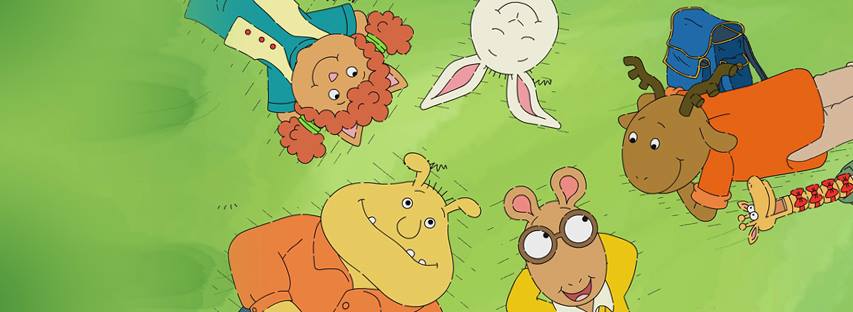A nostalgic, familiar sight as Arthur and his friends are sitting in class with Mr. Ratburn, studiously paying attention as the curmudgeonly teacher drones on about math. But something is off. None of the characters look quite right. Their outlines are bolder and there’s almost no subtlety to their expressions.
And now they’re moving, but again, something about the aesthetic just feels wrong. Francine has gotten out of her seat and is walking as if she’s a puppet, jerking her limbs and awkwardly gliding across the classroom floor like some horror out of Silent Hill. And what’s this? She’s dropped a banana peel. What follows is exactly what you’d expect – a goofy, disappointing attempt to generate laughter as Francine slips on the peel and slides right into the chalkboard.
What happened to the show I used to love?
Arthur, the long-running PBS series about an adolescent aardvark and his friends, was a staple of my childhood. The show beautifully captured Marc Brown’s thoughtful children’s books, giving life to the characters by giving them a voice and putting them in motion. The animation was detailed, the stories were well-written and the dialogue was tight. After getting its start in 1996, it remains the network’s longest running show aside from Sesame Street, and the second longest-running cartoon on American TV other than The Simpsons.
There was a reason for the show’s success. The writers exhibited extraordinary insight on how to communicate serious ideas to kids — more so than perhaps any other children’s television series to date. Consider the classic episode “Prove It!,” where D.W. creates her own backyard “science” museum. Much to the chagrin of Arthur’s friend The Brain, she proceeds to use her creation to spread misinformation to all of the other kids in the neighborhood. At once, D.W. becomes the face of every pseudoscientific argument in modern political discourse.
This is a perfect example of how the writers refused to talk down to their audience, elementary school kids or no. Using D.W. as a vehicle, they framed the situation so that any child watching the show could explain why she is wrong and The Brain is right. I happen to know more than a few politicians who could stand to listen to their wisdom, too.
The showrunners also had an uncannily deft grasp of popular culture. Remember when Arthur predicted the meteoric rise of hologram bands like Gorillaz and Hatsune Miku with the episodes “Binky Rules” and “Meet Binky”? What about when Muffy starts a blog and almost ruins her friendship with Francine in a desperate attempt to drive traffic to her site? Or the time Arthur riffed on Beavis and Butthead, Dexter’s Laboratory, Dr. Katz and the WWE all in one episode? That’s right — it’s called “The Contest” and it’s a beautiful piece of intertextual commentary. Go watch it.
https://youtu.be/mWnb8Oy2euA?t=415
All this being said, you can imagine my surprise when I flipped on an episode from Season 16 of Arthur called “Flippity Francine” and saw the scene described above. This is not the Arthur I grew up with. This isn’t the Arthur that was, up until the most recent season, teaching kids using high-quality art and meaningful morality tales. What now stands in for the show is a traitorous abomination of what was once poignant children’s fare. And I’m mad.
Apparently, some behind-the-scenes drama has led to Arthur switching from Cookie Jar Entertainment to Story 9 Entertainment for Season 16 and 17. This new studio uses flash-based techniques instead of the traditional approach that bore the show through its infancy. While the old process was likely more costly and time-consuming, it also forced the writers to come up with situations and humor that relied on intelligence and wit instead of low-brow slapstick gags.
The new Arthur takes the insult beyond its visual shortcomings. These new episodes, with their strange puppet-like animation, belie their severely-altered style by using the same intro that has opened the show since Season 1. Indeed, Ziggy Marley’s famous theme song and the classic animation of seasons past open every new episode of Arthur. But those catchy lyrics no longer bring with them the promise of the masterworks of yore. Instead, they represent the disingenuous nature of this new, Frankensteinian monstrosity.
It’s too painful to go on describing what’s become of Arthur. Suffice it to say that you’ve desecrated something holy, PBS. And I say, “Hey, it’s not a wonderful kind of day.”
~ Søren
This article was published in its original form in The Massachusetts Daily Collegian on November 5, 2013.

